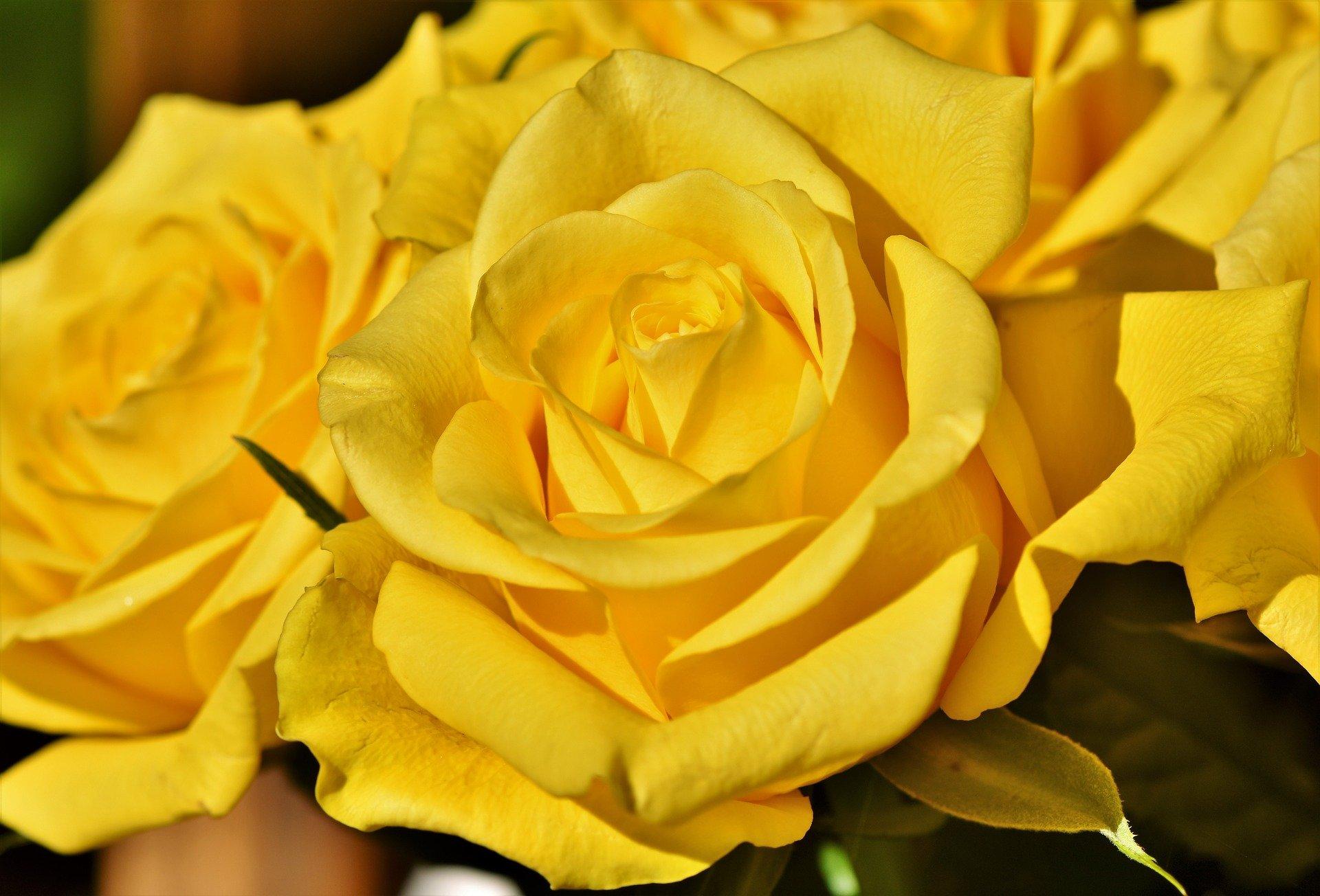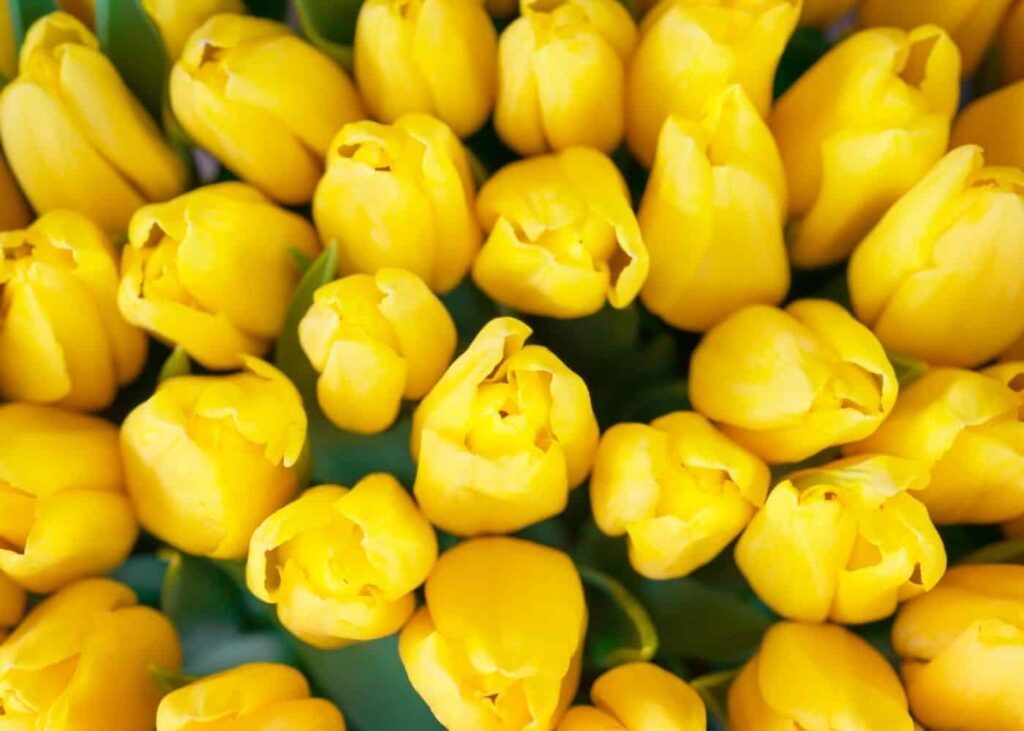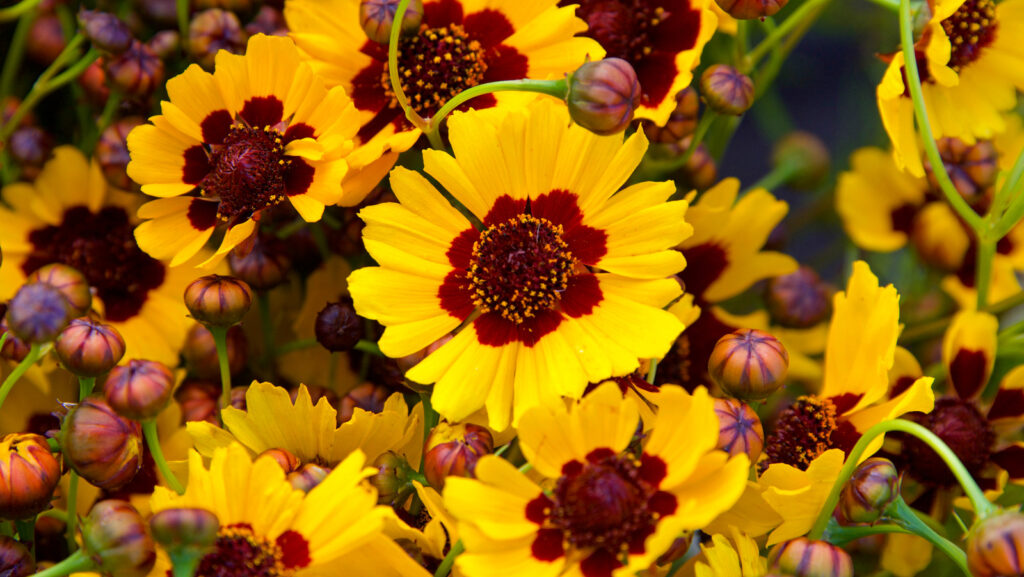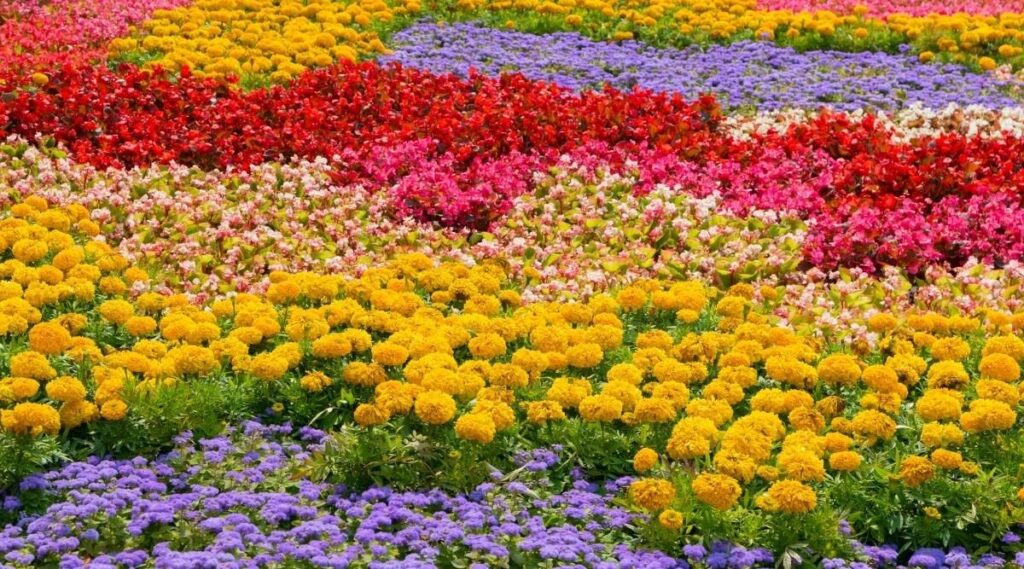The Therapeutic Effects of Surrounding Yourself with Yellow Flowers

Yellow flowers have long been admired for their vibrant hues and delicate beauty. However, their impact goes beyond aesthetics. Research has shown that surrounding yourself with yellow flowers can have therapeutic effects on your mental and emotional well-being.
Understanding the Psychology of Color
In order to fully appreciate the therapeutic effects of yellow flowers, it is important to understand the psychology of color. Colors have the power to evoke different emotions and can significantly influence our mood and mindset. Yellow, in particular, is associated with feelings of joy, happiness, and optimism.
When we see the color yellow, our brain releases serotonin, a neurotransmitter responsible for feelings of happiness and well-being. This is why yellow flowers can have such a positive impact on our mood. Surrounding yourself with yellow flowers can help uplift your spirits and promote a positive mindset.
But the effects of yellow go beyond just mood enhancement. Yellow is also associated with energy and can provide a much-needed boost during times of fatigue or stress. Just a glimpse of yellow can instantly make you feel more awake and alert.
The Impact of Yellow on Mood and Emotion
The color yellow is known to stimulate the production of serotonin, a neurotransmitter responsible for feelings of happiness and well-being. Surrounding yourself with yellow flowers can help uplift your mood and promote a positive mindset. Additionally, yellow is associated with energy and can provide a much-needed boost during times of fatigue or stress.
See also: A Seasonal Guide to the Most Stunning Yellow Blooms

Yellow is often used in advertising and marketing to grab attention and create a sense of excitement. It is a color that demands to be noticed and can instantly make a statement. This is why yellow flowers can be so captivating and eye-catching.
Furthermore, yellow is often associated with creativity and innovation. It is a color that sparks imagination and encourages new ideas. By surrounding yourself with yellow flowers, you may find yourself feeling more inspired and motivated to pursue your creative endeavors.
The Symbolism of Yellow in Different Cultures
Yellow holds symbolic meaning in various cultures around the world. In many Eastern cultures, yellow is associated with good luck, prosperity, and enlightenment. It is often seen as a color of royalty and is reserved for special occasions. By incorporating yellow flowers into your surroundings, you can embrace these positive cultural associations and enhance your overall well-being.
In Western cultures, yellow is often associated with sunshine and warmth. It is a color that brings to mind feelings of happiness and joy. By adding yellow flowers to your home or workspace, you can create an atmosphere of positivity and warmth.
Yellow is also the color of caution and warning. It is often used in traffic signs and hazard symbols to alert people of potential dangers. This duality of yellow, representing both happiness and caution, adds depth and complexity to its symbolism.
Overall, the psychology of color reveals that yellow is a powerful and versatile color. Its ability to evoke positive emotions, stimulate creativity, and symbolize different cultural meanings makes it an ideal choice for incorporating into our lives through the beauty of yellow flowers.
The Healing Power of Flowers
Flowers, in general, have been used for centuries as a natural remedy for various ailments. Their presence alone can create a calming atmosphere and reduce stress levels. Flower therapy, also known as floral medicine, utilizes the healing properties of flowers to promote emotional balance and well-being.
The Role of Flowers in Mental Health
Flowers have been found to have a profound impact on mental health. Studies have shown that being exposed to flowers can alleviate symptoms of anxiety and depression. The presence of flowers in a person’s environment can improve mood, increase feelings of comfort, and reduce negative emotions.
The Science Behind Flower Therapy
The therapeutic effects of flowers are not merely anecdotal; they are backed by scientific research. Flowers release natural scents that can stimulate the olfactory system and trigger positive emotional responses. Additionally, the vibrant colors of flowers can activate visual receptors in the brain, instilling a sense of joy and calmness.
Combining Yellow and Flowers for Therapy
Incorporating yellow flowers into your therapy regimen can amplify their therapeutic effects and create a more vibrant and uplifting environment.
The Benefits of Yellow Flowers in Your Living Space
Placing yellow flowers in your living space can instantly brighten the room and create a welcoming atmosphere. The presence of yellow can evoke feelings of warmth, happiness, and positivity, making it an ideal color for communal areas in your home.
Incorporating Yellow Flowers in Your Daily Routine
Aside from decorating your living space with yellow flowers, you can also incorporate them into your daily routine. Adding a small arrangement of yellow flowers to your morning routine can set a positive tone for the day and energize your spirit. You can also wear yellow flowers as accessories or use them as natural air fresheners to enjoy their benefits on the go.
Choosing the Right Yellow Flowers for You
When it comes to selecting yellow flowers for therapy, there are several factors to consider. Not only should you take into account your personal preferences, but also the meanings associated with different types of flowers. By understanding the symbolism behind each flower, you can choose ones that resonate with your values and intentions, creating a more meaningful therapeutic experience.

Let’s explore some popular yellow flowers and their meanings:
1. Sunflowers
Sunflowers are a classic choice when it comes to yellow flowers. These vibrant blooms symbolize happiness and longevity. Just like the sun, they radiate warmth and positivity, making them a perfect choice for brightening up your therapy space.
2. Daisies
If you’re looking for a flower that represents innocence and purity, daisies are an excellent option. Their delicate petals and simple beauty evoke a sense of childlike wonder and remind us to embrace the purity of our own hearts.
3. Marigolds
Marigolds are known for their vibrant yellow color and strong fragrance. These flowers symbolize passion and creativity, making them a great choice for individuals seeking to ignite their creative spark during therapy sessions. The bright and bold nature of marigolds can inspire you to think outside the box and explore new possibilities.
4. Tulips
Tulips come in a variety of colors, including yellow. These elegant flowers symbolize grace and elegance. Their slender stems and graceful curves can add a touch of sophistication to your therapy space, creating an atmosphere of tranquility and serenity.
Now that you have a better understanding of the meanings behind different yellow flowers, you can choose ones that align with your therapeutic goals and personal preferences. Remember, the flowers you select can have a profound impact on your overall well-being.
Caring for Your Yellow Flowers
Once you have chosen the perfect yellow flowers for your therapy sessions, it is important to provide them with the proper care to ensure their longevity and vibrancy. Here are some tips for caring for your yellow flowers:
1. Regular watering: Yellow flowers, like any other plants, require regular watering to stay healthy. Make sure to water them according to their specific needs, keeping the soil moist but not overly saturated.
2. Adequate sunlight exposure: Most yellow flowers thrive in bright sunlight. Find a suitable spot in your therapy space where your flowers can receive ample sunlight throughout the day. This will help them grow and bloom to their full potential.
3. Trimming of wilted leaves: As your yellow flowers age, some of their leaves may start to wilt or turn brown. To maintain the overall appearance and health of your flowers, it is important to trim these wilted leaves regularly.
By nurturing your yellow flowers, you are not only taking an active role in their well-being but also in your own. The act of caring for living things can be therapeutic in itself, allowing you to cultivate a sense of responsibility and connection.
So, next time you choose yellow flowers for therapy, remember to consider their meanings, provide them with proper care, and embrace the beauty and symbolism they bring to your therapeutic space.

The Potential Drawbacks and Considerations
While surrounding yourself with yellow flowers can have numerous therapeutic benefits, it is important to be aware of potential drawbacks and considerations.
Allergies and Sensitivities to Consider
Some individuals may have allergies or sensitivities to certain types of flowers or their pollen. If you have known allergies or respiratory conditions, it is important to consult with a healthcare professional before introducing yellow flowers into your environment. They can help you identify flowers that are less likely to trigger allergic reactions.
It is also worth noting that allergies to flowers can vary from person to person. While one individual may have a severe reaction to a specific type of flower, another person may have no reaction at all. Therefore, it is crucial to pay attention to your body’s response and seek medical advice if needed.
In addition to allergies, some individuals may have sensitivities to the fragrance of certain flowers. The strong scent of some yellow flowers, such as jasmine or lilies, can be overpowering for some people, leading to headaches or respiratory discomfort. If you are sensitive to strong scents, it is advisable to choose flowers with a milder fragrance or opt for unscented varieties.
Ensuring a Balanced Approach to Color Therapy
While yellow flowers can be incredibly powerful in enhancing mood and well-being, it is important to remember that color therapy should be used as part of a holistic approach to self-care. It is not a substitute for professional mental health treatment or medication. It is essential to maintain a balanced approach and seek guidance from qualified professionals when necessary.
Color therapy, also known as chromotherapy, is a complementary therapy that uses colors to promote physical, emotional, and mental well-being. Each color is believed to have its own unique energy and vibration, which can affect our mood and emotions. Yellow, in particular, is associated with feelings of joy, optimism, and mental clarity.
However, it is important to note that color therapy should not be solely relied upon for treating serious mental health conditions. While it can be a helpful tool in managing symptoms and improving overall well-being, it is crucial to seek professional help when needed. A qualified mental health professional can provide a comprehensive treatment plan tailored to your specific needs.
Furthermore, it is important to approach color therapy with an open mind and be receptive to its effects. While some individuals may experience immediate benefits from surrounding themselves with yellow flowers, others may require more time to notice any changes in their mood or well-being. Patience and consistency are key when incorporating color therapy into your self-care routine.
In conclusion, surrounding yourself with yellow flowers can have significant therapeutic effects on your mental and emotional well-being. By understanding the psychology of color, the healing power of flowers, and the potential benefits of combining yellow with flower therapy, you can harness the positive energy and uplift your spirit. So go ahead, fill your surroundings with the vibrant beauty of yellow flowers and experience the transformative power they hold.
